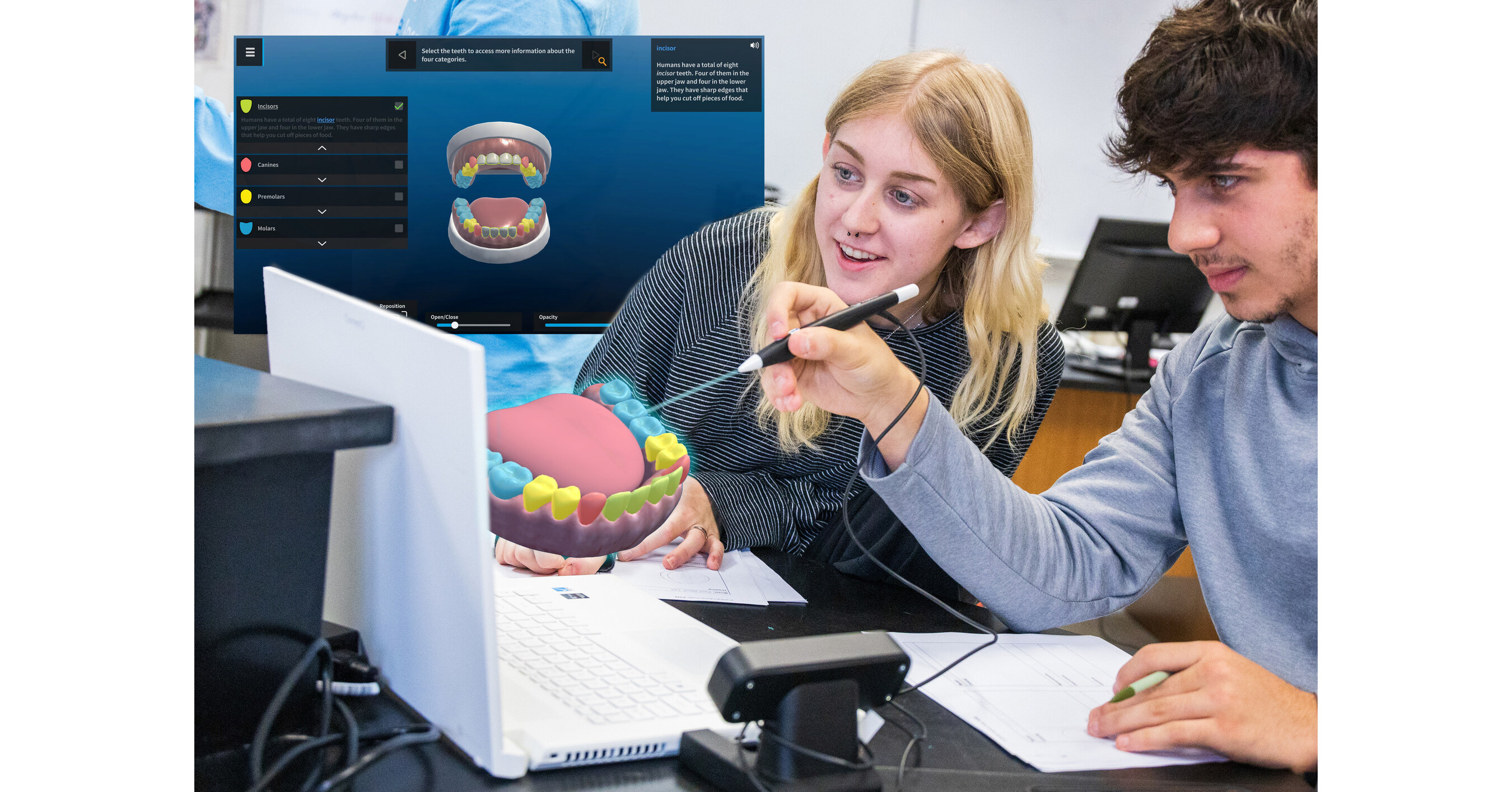- TECHSWU
- Posts
- TECHSWU #61
TECHSWU #61
Welcome to TECHSWU, your go-to destination for all things tech that matter in your daily life!



Nike and Hyperice have partnered to develop wearable technology that enhances athletes' warm-up and recovery. The collaboration has resulted in the creation of the Nike x Hyperice boot and vest, both of which aim to improve athletes' performance.
The boot is a high-top shoe that features dual-air Normatec bladders and warming elements to distribute heat evenly throughout the foot and ankle. It offers heat and dynamic air-compression massage on-demand.
The vest, on the other hand, uses thermoelectric coolers to deliver instant heating and cooling, allowing athletes to control their body temperature during warm-ups and cool-downs. The vest also contains sensors that monitor and maintain body temperature.
Nike and Hyperice hope that this wearable technology will revolutionize athletes' warm-up and recovery routines

Education technology company zSpace has announced the launch of zSpace AI, a new tool that combines artificial intelligence (AI) with its augmented and virtual reality (AR/VR) platform. zSpace AI aims to enhance the learning experience by providing personalized assistance to teachers and students, filling in gaps that traditional methods may miss.
The platform offers curated AI content aligned with student needs, including interactive simulations and data-driven insights. Additionally, zSpace AI features Career Coach AI, an AI-driven assistant that provides insights into various career paths, including information on local opportunities based on a user's location.
zSpace AI aims to revolutionize education by fostering personalized learning experiences and helping students prepare for the challenges of the future.

Researchers in Switzerland are working on creating robots that are not only functional but also edible. The project, known as RoboFood, aims to replace mechanical parts of robots with edible ones, helping to reduce e-waste and offer health benefits.
The robots will have the ability to monitor health, administer nutrition and medications, and reduce technological waste. For example, gelatin may be replaced with rubber and foam may be substituted with rice cookies, while chocolate can be used to protect the components from humidity and moisture.
The project has seen previous successes, such as the creation of an edible gripper in 2017 and a drone made with rice cookie wings in 2022. The interdisciplinary project combines engineering and culinary science, and researchers and colleagues from other universities are also assisting in its development.
Soon, robots may just become part of our menu.

Smart glasses have entered a renaissance era, with the best models impressing users all over the world. These glasses incorporate a mix of artificial intelligence (AI) and augmented reality (AR) to provide users with a unique and immersive experience.
While still in the early stages of their development, the current smart glasses on the market offer impressive features. The best AR smart glasses on the market are the Xreal Air 2 glasses, which provide strong HD visuals and a comfortable design.
For those on a budget, the Xreal Air glasses offer a more affordable option with slightly fewer features. For AI-powered glasses, the Ray-Ban Meta glasses are recommended, featuring the Meta AI's Look and Ask feature.
For fans of ChatGPT, the Lucyd glasses offer hands-free access to the AI. Finally, the Amazon Echo Frames (Gen 3) provide integration with Alexa for smart home control.
These smart glasses offer a range of features and options for users looking to enter the world of AI and AR.

Apple is rumored to be working on a new wearable device called the Apple Ring, which is set to enter the smart ring market and provide a unique alternative to the popular Apple Watch. This sleek and comfortable ring is expected to offer extended battery life, lasting up to a week on a single charge, making it a more convenient option for busy users.
In addition to its comfort and convenience, the Apple Ring is also expected to include advanced sensors for health monitoring, such as blood pressure and glucose level tracking. It may also feature gesture control functionality and NFC technology for contactless payments.
The Apple Ring is anticipated to integrate seamlessly with other Apple devices and could enhance the functionality of Apple's Vision Pro. While there is no official release date yet, the Apple Ring is expected to launch by the end of 2025 or early 2026.
Overall, the Apple Ring has the potential to transform the way we interact with smart devices and manage our well-being.


Artificial intelligence (A.I.
) tools are becoming increasingly proficient at creating realistic images and photographs, often fooling social media users into thinking that the images are real. The New York Times has created a quiz to test readers' ability to distinguish between A.
I.-generated images and real images.
The quiz features various photographs, including celebrity photoshoots, singers, world leaders, and interior designs. The challenge is to identify whether each image is real or A.
I.-generated.
While some images might exhibit telltale signs of being created by A.I.
, such as missing limbs or garbled text, others are more difficult to distinguish. The proliferation of A.
I.-generated images poses risks for online deception and eroding public trust in genuine images.
Several social networks have announced plans to label images created by A.I.
, although this feature is still being rolled out.
Artificial intelligence (AI) is set to disrupt venture capital firms as they increasingly use AI to automate various tasks and make investment decisions. VCs are finding that AI can be used to scrape publicly available data and identify potential investment opportunities, as well as track the performance of companies in their portfolio.
The use of AI is expected to reduce the need for human analysts, potentially cutting headcounts by more than 50%. Some firms have already embraced AI, with one VC using generative AI to manage their portfolio and another building a machine-learning model to identify promising companies.
However, while AI can enhance efficiency and provide valuable insights, it is not a complete replacement for human decision-making and personal connections, particularly in the early stages of venture capital where new and innovative ideas are being explored.

In a surprising move, Tesla announced the launch of its Optimus Gen 2 humanoid robot during its recent stockholder meeting. Priced between $10,000 and $20,000, the advanced robot is set to disrupt the labor market and potentially boost Tesla's market value.
The Optimus Gen 2 robot boasts 22 degrees of freedom in its hands, allowing it to perform intricate tasks such as playing the piano. With the help of AI, the robot can understand and anticipate user needs, adapting to different environments and preferences.
It can execute up to 70 tasks and even offers customizable personality and voice options. While the introduction of Optimus may reduce Tesla's workforce by 60% by 2030, it also opens up new opportunities in manufacturing and robot technology development.
Tesla plans to produce Optimus cost-effectively and utilize existing automotive technology, positioning itself as a leader in the robotics industry. However, the robot still faces challenges such as developing a supply chain for specialized components and achieving scalable mass production.
Overall, the Optimus robot represents a significant milestone in human-machine collaboration and has the potential to reshape work and industry.

The warehousing industry is increasingly turning to artificial intelligence (AI), machine learning (ML), and robotics to optimize operations. With the rise of online commerce and the expectation for quick deliveries, companies are implementing "micro fulfillment centers" near population centers to meet customer demands.
AI and ML can automate tasks such as demand forecasting, inventory management, space utilization, and picking and packing efficiency. Robotics, on the other hand, can perform repetitive tasks with precision and speed.
These technologies help increase profits, improve safety and security, and enhance customer satisfaction. However, privacy, ethics, and workplace safety must also be considered when integrating AI and robotics into warehousing.
By monitoring key performance indicators and prioritizing compliance and data privacy, organizations can reap the full benefits of these technologies. Major retailers like Target and Walmart are already investing in autonomous warehouse solutions to transform their supply chains and logistics operations.

Photography enthusiasts have plenty of new tech options to choose from to enhance their skills and creativity. From the smallest instant camera to high-flying drones, there is something for everyone in the world of photography gadgets.
The Polaroid Go Generation 2 instant camera, with its wider aperture range and built-in selfie mirror, is perfect for capturing memories in a flash. The Groov-e Kidz Digital Instant Print Camera is a fun and affordable option for kids to start their photography journey.
The Rode Phone Cage is a game-changer for iPhone video shooters, offering a secure grip and ample connectivity options. The Blackmagic Pyxis 6K is a top-of-the-line cinematographical camera with a 6K sensor and dual CFexpress media recorders.
Whether you're a professional or an amateur, the best photography tech can take your creative vision to the next level.
Lenovo has launched its latest line of Legion and Lenovo LOQ gaming devices in the Philippines. The devices come with new cooling solutions, including the Legion Coldfront Hyper thermal solution, which optimizes heat management and promises cooler running temperatures.
The Lenovo LOQ laptops feature hyperchamber thermal technology, allowing them to draw up an additional 25W of power while maintaining cooler skin temperatures. The Legion lineup includes models such as the Legion 9i, Legion 7i, and Legion 5i, all equipped with the latest Intel Core processors and NVIDIA RTX graphics.
The laptops also feature a 16-inch PureSight display, up to 64GB of RAM, and up to 2TB of SSD storage. The Legion laptops start at PHP 144,995 in the Philippines.
For more affordable gaming options, Lenovo also introduced the Lenovo LOQ Gen 9 laptops, which start at PHP 51,995.
